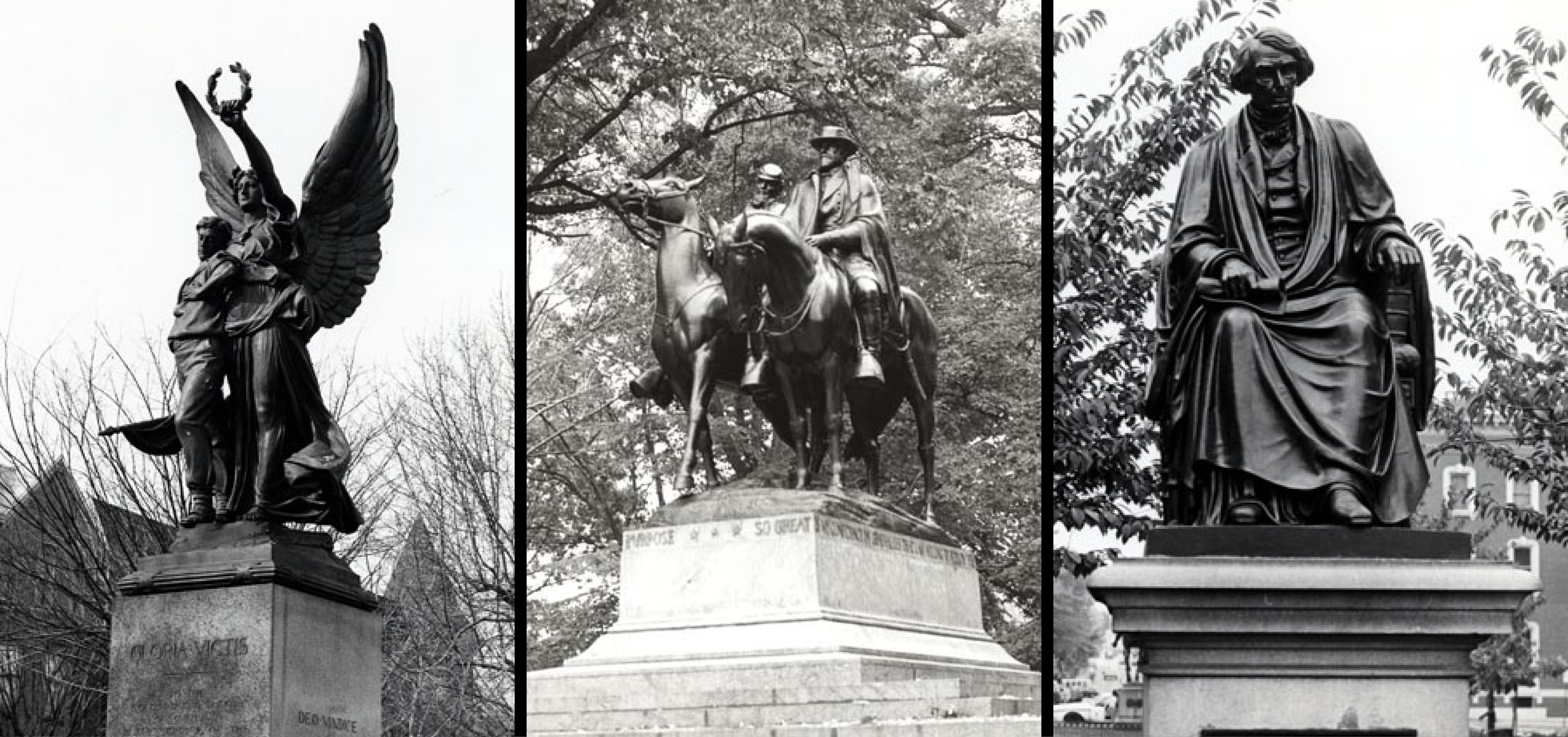Confederate Monuments

Read the commission's report and recommendations here.
On June 30, 2015, Mayor Stephanie Rawlings-Blake announced the creation of a special commission to review all of Baltimore’s Confederate statues and historical assets. Under the request, Mayor Rawlings-Blake directed the special commission to launch a conversation about each of the different Confederate-era monuments and other historical assets and make recommendations for their future in Baltimore.
The Mayor stated that "It is important that we recognize the delicate balance between respecting history and being offensive. I believe that by bringing together representatives from the art community and historians and gathering public testimony, we have a better chance of understanding the importance of historic monuments—not only the significance they have in our history but the role they should play in our future.”
There are four Confederate monuments on City property that were reviewed by the commission. They are Confederate Soldiers and Sailors Monument located on Mount Royal Avenue near Mosher Street; Confederate Women of Maryland, located at Bishop Square Park; Roger B. Taney Monument, located on Mt. Vernon Place in North Park; and Lee & Jackson Monument, located in Wyman Park. More information on each monument is available on the Commission's website.
On September 4, 2015, the appointees to the Commission were announced. Mayor Rawlings-Blake selected four members from the Baltimore City Commission for Historical and Architectural Preservation (CHAP), and three members from the Baltimore City Public Arts Commission. The Commission was staffed by two CHAP staff, a BOPA staff member, and a Mayoral staff representative on the Commission.
Over the next six months, the commission conducted a thorough review of Confederate monuments on City-owned property including gathering research and soliciting public testimony. The commission held four public meetings, including one that was exclusively for public testimony. Public comments were also welcomed via mail or email. As part of its research, the Commission gathered information on the monuments themselves and their histories, as well as how other cities have handled similar circumstances regarding historic monuments – looking at Confederate-era statues in American cities, as well as elsewhere around the world.
Based on the findings, the commission issued a series of recommendations to the Mayor for the future of the monuments. The considered recommendations included preservation in place, the addition of new signage, relocation, or removal.
Following the submission of the report, Mayor Rawlings-Blake announced that the installation of interpretative plaques would be a short-term solution. A plaque was installed at each monument on December 3, 2016. The content of these plaques can be viewed on this website on the page for each individual monument.